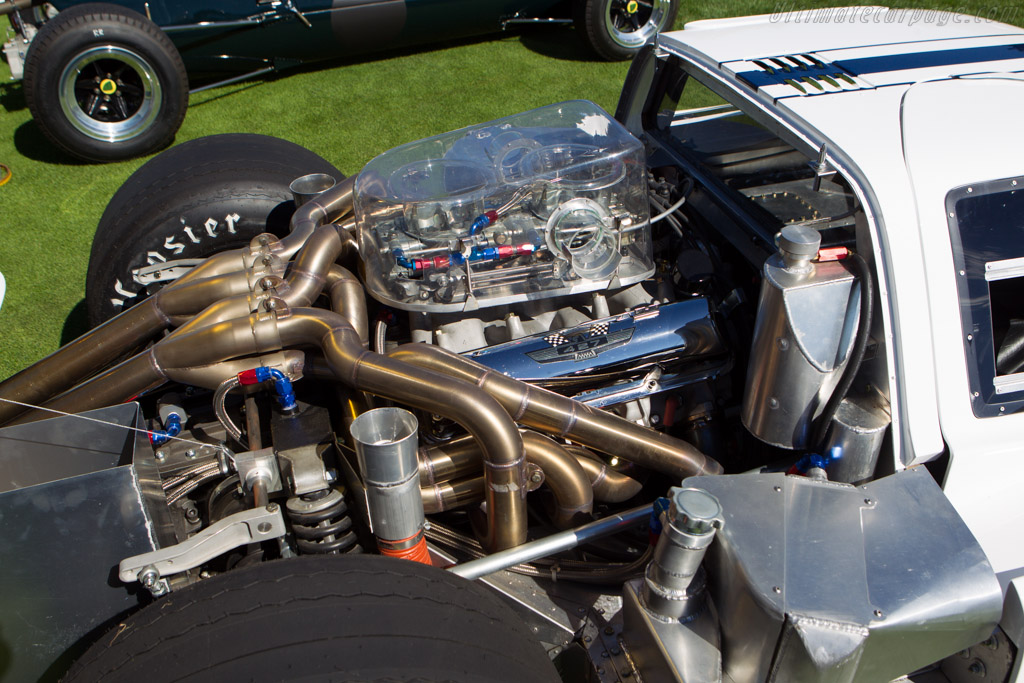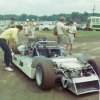We did not have a choice. We purchased J-10 with a MK-IV body many years ago. The G-7A body was long gone. G-7A was never competitive in CanAm
Regarding what Ford called the program. If you have a Ford GT40 MK-I, MK-II and MK-III and then You make a new car and keeps the sequence (MK-IV). It is logical is part of the same group car. Officially Ford never register the name GT40 and it was registered much later by other. Ford built the new GT it was too expensive to use the GT40 name. Ford Press Release is clear that the MK-IV was part of the Ford GT Program to win Le Mans but this time with a US built car with american drivers.
The car that Ken Miles crashed was not a CanAm car. J-2 had the unstable breadwagon body.
Hi Jim
I was not getting at the fact that J-9 and J-10 were going to be rebodied as MKIVs.
As for Fords Total Performance Program sure the J-car/MKIV was part of the program. But it was not a GT40 It started a a parrallel design concept when the MKII became too heavy and uncompedititive. The last GT40 being the 1967 MKIIB running at the same time as the MKIV at Le Mans
Sure the name of the MKIV was sequential. But that does not mean the MKIV is a GT40! In fact it was to be called the MKIII but the road car got there first. And I forgot there is no such thing as a MKI as I have been told but I use it in retrospect. But not all racing car type numbers follow that rule what about Lola T70 endurance racer, T90 Indy etc.
Whatever the press releases said never mentioned that the original J car had proved a failure and that the MKIV was never designed as a MKIV from scratch! But used the J car as the basis for its existence.
Sure Ford wanted an all American car and crew to win Le Mans . Henry Ford II regarded the 1966 win as Anglo American car with New Zealand drivers. The fact that the winning GT40P/1046 was painted in New Zealand colour scheme did not help either.
Also if Ford never had the rights to the name GT40 who did they paid when the GT40 production run started in 1965? And how could they have homolagated it with the authorities for Group 4 racing in 1965 without the use of the name? I have copy of the original GT40 brochure from 1966 and its not the MKIII on the cover but them MKI why did no one sue them if they were using the GT40 name without authority? And although Ford had officially pulled out after the rule changes and succeeding in there aim of winning at Le Mans with all American car and drivers. It must of unoffically backed the JWAE assault on 1968/69 Le Mans with the Gulf sponsored much modified GT40's why was not the cars renamed MKV's or MKIB's???
I think you will have to discuss the type of car J-2 was with Ronnie Spain it was not the Breadvan as it had a different shape. And I know the claws on J-1 were detachable.
But I quote from Ronnies book, "J-2 was built to CanAm configuration to make use of the late season CanAm Challenge Championship as extra race evaulation mileage. Unfortunately J-2 never made it as far as the opening round, as after its initial shakedown at Kingman, Arizona, it was totally destroyed at Riverside on 17 August in the testing accident which claimed the life of the inimitable California-based Englishman Ken Miles".
So while the overall push was for Le Mans things that resulting in more testing would have been considered and explored as in J-2 case.
Regards Allan





